To the sound of the gnashing of teeth and wringing of hands of recent D40 purchasers, Nikon has announced an upgraded version of the camera, the Nikon D40x.
Essentially identical to the D40, the D40x comes with a much beefier ten megapixel CCD (up from 6 megapixel) and an improved ISO rating going down to ISO 100 (the D40 could only manage an ISO 200 base sensitivity).
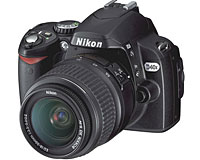 Nikon claim that the battery life has been extended to allow up to 520 images per charge (better than the 470 images for the D40) and can rattle off more photos in continuous shooting mode (3 frames per second compared to 2.5 fps for the D40).
Nikon claim that the battery life has been extended to allow up to 520 images per charge (better than the 470 images for the D40) and can rattle off more photos in continuous shooting mode (3 frames per second compared to 2.5 fps for the D40).
As with its predecessor, the D40x provides a capable and highly affordable route into the highly rated Nikon SLR system, and comes with a super fast power up time (0.18 seconds), Nikon’s 3D Colour Matrix Metering II, an improved Image Processing Engine, a bright viewfinder and a large 2.5″ LCD screen.
There’s eight ‘Digital Vari-Program modes’ on offer to help beginners get to grip with the camera’s capabilities, with the option to engage manual control and boldly go into aperture and shutter speed settings.
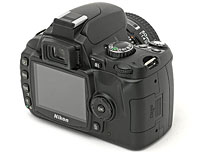 In-camera editing tools let snappers adjust compensation, correct red-eye or use monochrome effects to get that Ye Olde Black-and-white or Sepia tone effect.
In-camera editing tools let snappers adjust compensation, correct red-eye or use monochrome effects to get that Ye Olde Black-and-white or Sepia tone effect.
With Clint Eastwood-esque squinting eyes, the D40x has clearly got the Canon EOS 400D (Digital Rebel XTi) in its sights, and with a highly competitive price of $799 (including the 18-55 mm kit lens), it’ll be interesting to see how Canon reacts.
The D40x will be launched worldwide at the end of March 2007
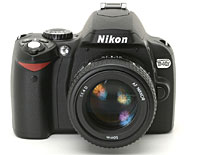 Specifications:
Specifications:
Price US: $ 729 (body only), with 18-55 mm lens US: $ 799
Body colour Black or Silver
Sensor 23.7 x 15.6 mm CCD sensor, Nikon DX format (1.5x FOV crop), 10.2 million effective pixels
Image sizes 3872 x 2592 (Large, 10.0 MP), 2896 x 1944 (Medium, 5.6 MP), 1936 x 1296 (Small, 2.5 MP)
Image quality NEF (12-bit compressed RAW), JPEG fine, JPEG normal, JPEG basic, NEF (RAW) + JPEG basic
Lens mount Nikon F mount (with AF coupling & AF contacts)
Lens compatibility Type G or D AF Nikkor, AF-S, AF-I, Other Type G or D AF Nikkor, PC Micro-Nikkor 85mm f/2.8D, Other AF Nikkor*2/AI-P Nikkor
Autofocus Three area TTL phase detection, Nikon Multi-CAM530 autofocus module, Only with AF-S or AF-I lenses, EV -1 to +19 (ISO 100 equivalent, at normal temperature)
Lens servo Single-servo AF (AF-S), Continuous-servo AF (AF-C), Automatic AF-S/AF-C (AF-A), Manual focus (M)
AF Area mode: Single Area AF, Dynamic Area AF, Closest Subject Priority Dynamic Area AF
Focus tracking Predictive focus tracking automatically activated according to subject status in continuous-servo AF
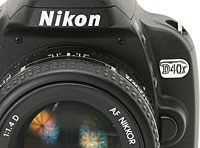 Focus area One of three areas can be selected
Focus area One of three areas can be selected
Focus lock Focus can be locked by pressing shutter-release button halfway (single-servo AF) or by pressing AE-L/AF-L button
AF Assist White light lamp
Exposure mode Digital Vari-program, Auto, Flash off, Portrait, Landscape, Child, Sports, Close up, Night portrait, Programmed auto (P) with flexible program, Shutter-priority auto (S), Aperture priority auto (A), Manual (M)
Metering TTL full-aperture exposure metering system, 3D color matrix metering II, 420 segment RGB sensor, Center-weighted, spot
Metering range: EV 0 to 20 (3D color matrix or center-weighted metering), EV 2 to 20 (spot metering) (ISO 100 equivalent, f/1.4 lens, 20 °C)
Exposure compen. +/- 5.0 EV, 1/3 EV steps
AE Lock Exposure locked at detected value with AE-L/AF-L button
AE Bracketing None
Sensitivity Auto, ISO 100-1600, ISO 3200 equiv. (HI 1)
Shutter Combined mechanical and CCD electronic shutter, 30 to 1/4000 sec (1/3 EV steps), Flash X-Sync: up to 1/200 sec, Bulb
White balance Auto (TTL white-balance with 420 pixels RGB sensor), Six manual modes with fine-tuning
Image parameters: Preset modes: Normal, Softer, Vivid, More Vivid, Portrait, B&W
Color mode: Ia (sRGB), II (Adobe RGB), IIIa (sRGB)
Viewfinder Optical fixed eye-level, Penta-mirror type, Built-in diopter adjustment (-1.7 to +0.5 m-1)
Viewfinder information: Focus indications, AE/FV lock indicator, Shutter speed, Aperture value, Exposure/Exposure compensation indicator, Exposure mode, Flash output level compensation, Exposure compensation, Number of remaining exposures, Flash-ready indicator
LCD monitor 2.5″ TFT LCD, 230,000 pixel
Built-in flash: Auto pop-up in Auto, Vari-program modes, Manual pop-up in P, S, A or M modes
Guide number: approx. 17 at ISO 200
Shooting modes Single frame shooting (S) mode, Continuous shooting (C) mode: approx. 3.0 frames per second (slower with NR)
Continuous buffer: JPEG: Limited only by storage, RAW: Approx. 9 frames (shooting continues at a slower rate)
Self-timer: 2, 5, 10 or 20 sec
Storage: Secure Digital / Secure Digital HC, FAT / FAT32
Video output: NTSC or PAL selectable
Connectivity: USB 2.0 (Hi-Speed)
Dimensions 126 x 94 x 64 mm (5.0 x 3.7 x 2.5 in)
Weight: (no batt) 71 g (1.0 lb), (inc. batt) 522 g (1.2 lb)
 Mobile games are starting to rake in big revenues in the States as perambulating punters warm to the idea of downloading games for their phones.
Mobile games are starting to rake in big revenues in the States as perambulating punters warm to the idea of downloading games for their phones. Although you might imagine that mobile gaming would be the near-exclusive preserve of socially challenged males aged 25 to 36, Telephia says that it’s the ladies who are the hottest to trot, with 65 percent of U.S. mobile game buyers being of the female persuasion.
Although you might imagine that mobile gaming would be the near-exclusive preserve of socially challenged males aged 25 to 36, Telephia says that it’s the ladies who are the hottest to trot, with 65 percent of U.S. mobile game buyers being of the female persuasion. The market seems to be consolidating around the big name manufacturers, with other vendors now only accounting for 14% of worldwide mobile phone sales in 2006 – down 5% from 2005.
The market seems to be consolidating around the big name manufacturers, with other vendors now only accounting for 14% of worldwide mobile phone sales in 2006 – down 5% from 2005. Motorola’s total sales for 2006 hit 209 million units, which translates into a 21.1 percent market share.
Motorola’s total sales for 2006 hit 209 million units, which translates into a 21.1 percent market share. As ever, the camera sports a beast of a 7.1x optical wide zoom lens (28–200 mm in 35 mm camera format) in a slim body measuring a pocketable 20.6 mm at its thinnest point.
As ever, the camera sports a beast of a 7.1x optical wide zoom lens (28–200 mm in 35 mm camera format) in a slim body measuring a pocketable 20.6 mm at its thinnest point.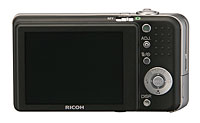 The camera comes with high-resolution, high viewing angle 2.7-inch LCD (up slightly on the R5 LCD), with Ricoh claiming a long 330 shot battery life.
The camera comes with high-resolution, high viewing angle 2.7-inch LCD (up slightly on the R5 LCD), with Ricoh claiming a long 330 shot battery life. Olympus has announced details of two additions to their dSLR range in the run up to the Photo Marketing Association (PMA) trade show in Las Vegas which starts on the 7th March.
Olympus has announced details of two additions to their dSLR range in the run up to the Photo Marketing Association (PMA) trade show in Las Vegas which starts on the 7th March. Olympus have also increased the camera’s high sensitivity performance thaks to a new TruePic III processor, backed by improved buffering of continuous frames offering shooting at 3fps with up to seven images in RAW buffer
Olympus have also increased the camera’s high sensitivity performance thaks to a new TruePic III processor, backed by improved buffering of continuous frames offering shooting at 3fps with up to seven images in RAW buffer Olympus E-510
Olympus E-510 Although not quite as small as it’s younger brother, the camera still measures up at a pleasingly bijou 5.4″ x 3.6″ x 2.7″, making it a great choice for travellers.
Although not quite as small as it’s younger brother, the camera still measures up at a pleasingly bijou 5.4″ x 3.6″ x 2.7″, making it a great choice for travellers.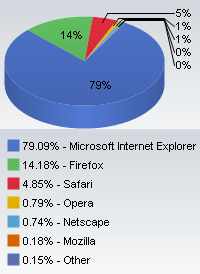 Like hungry puppies with sharp teeth, Mozilla’s Firefox and Apple’s Safari Web browsers continue to chew and gnaw away at the juicy legs of Microsoft’s Internet Explorer (IE).
Like hungry puppies with sharp teeth, Mozilla’s Firefox and Apple’s Safari Web browsers continue to chew and gnaw away at the juicy legs of Microsoft’s Internet Explorer (IE). “After a minor hiccup in January, Firefox seems to be back on the offensive in February,” said the fabulously named Vincent Vizzaccaro, Net Applications’ executive vice president of marketing and strategic relationships.
“After a minor hiccup in January, Firefox seems to be back on the offensive in February,” said the fabulously named Vincent Vizzaccaro, Net Applications’ executive vice president of marketing and strategic relationships. Two deals have been done, one with the BBC, the other BBC Worldwide, the commercial arm of the BBC. Financial terms of the deal aren’t being discussed at all.
Two deals have been done, one with the BBC, the other BBC Worldwide, the commercial arm of the BBC. Financial terms of the deal aren’t being discussed at all.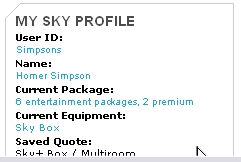 Sky has gradually been increasing the number of ways to program your Sky+ and HD boxes to record. The latest, via the Internet, joins interactive via
Sky has gradually been increasing the number of ways to program your Sky+ and HD boxes to record. The latest, via the Internet, joins interactive via 
 Strangely they have decided to impose a limit of 10 recording request a day via the Internet – but, in our view, anyone who need to remotely programme their box more than that needs help anyway. Those afflicted can reach for their mobile to carry on programming until their thumbs bleed.
Strangely they have decided to impose a limit of 10 recording request a day via the Internet – but, in our view, anyone who need to remotely programme their box more than that needs help anyway. Those afflicted can reach for their mobile to carry on programming until their thumbs bleed.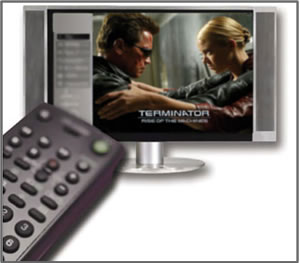 Research house iSupply are predicting that IPTV will be boosting the reveneue generated by the premium video services market from its current level of less than $200Bn to a whopping $277Bn by 2010.
Research house iSupply are predicting that IPTV will be boosting the reveneue generated by the premium video services market from its current level of less than $200Bn to a whopping $277Bn by 2010. That aside, iSupply see the battle royal between two big, hairy beasts – the current pay-TV world of direct-to-home satellite and digital and analogue cable TV services – and the telcos who will be pushing quad-play.
That aside, iSupply see the battle royal between two big, hairy beasts – the current pay-TV world of direct-to-home satellite and digital and analogue cable TV services – and the telcos who will be pushing quad-play. The full day event, running at the Frontline Club, is billed as “The Strategy, Technology and Business Case for Content Description, Visibility, Search and Discovery.”
The full day event, running at the Frontline Club, is billed as “The Strategy, Technology and Business Case for Content Description, Visibility, Search and Discovery.”